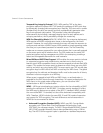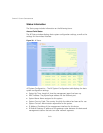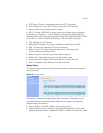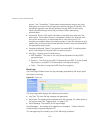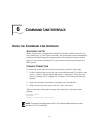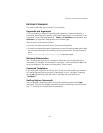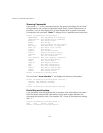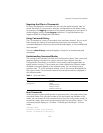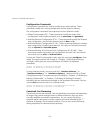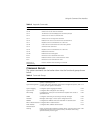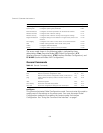
6-2
CHAPTER 6: COMMAND LINE INTERFACE
Telnet Connection
Telnet operates over the IP transport protocol. In this environment, your
management station and any network device you want to manage over the
network must have a valid IP address. Valid IP addresses consist of four numbers,
0 to 255, separated by periods. Each address consists of a network portion and
host portion. For example, if the access point cannot acquire an IP address from a
DHCP server, the default IP address used by the access point, 168.254.2.1,
consists of a network portion (168.254.2) and a host portion (1).
To access the access point through a Telnet session, you must first set the IP
address for the access point, and set the default gateway if you are managing the
access point from a different IP subnet. For example:
If your corporate network is connected to another network outside your office or
to the Internet, you need to apply for a registered IP address. However, if you are
attached to an isolated network, then you can use any IP address that matches
the network segment to which you are attached.
After you configure the access point with an IP address, you can open a Telnet
session by performing these steps.
1. From the remote host, enter the Telnet command and the IP address of the
device you want to access.
2. At the prompt, enter the user name and system password. The CLI will display
the “Outdoor 11a Building to Building #” prompt to show that you are using
executive access mode (i.e., Exec).
3. Enter the necessary commands to complete your desired tasks.
4. When finished, exit the session with the “quit” or “exit” command.
After entering the Telnet command, the login screen displays:
Outdoor 11a Building to Building #configure
Outdoor 11a Building to Building (config)#interface ethernet
Outdoor 11a Building to Building (if-ethernet)#ip address 10.1.0.1
255.255.255.0 10.1.0.254
Outdoor 11a Building to Building (if-ethernet)#
Username: admin
Password:
Outdoor 11a Building to Building #
NOTE: You can open up to four sessions to the device via Telnet.



